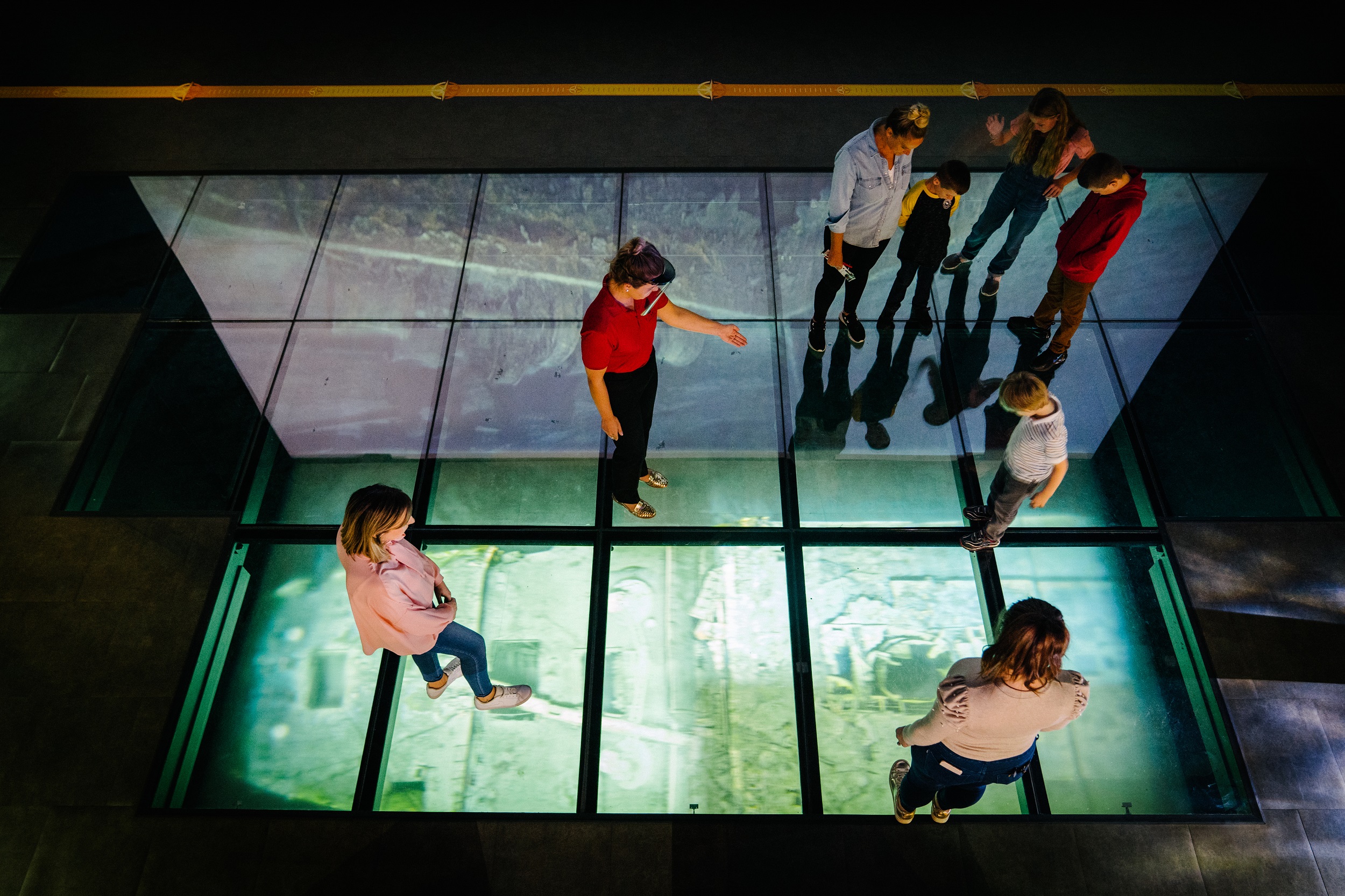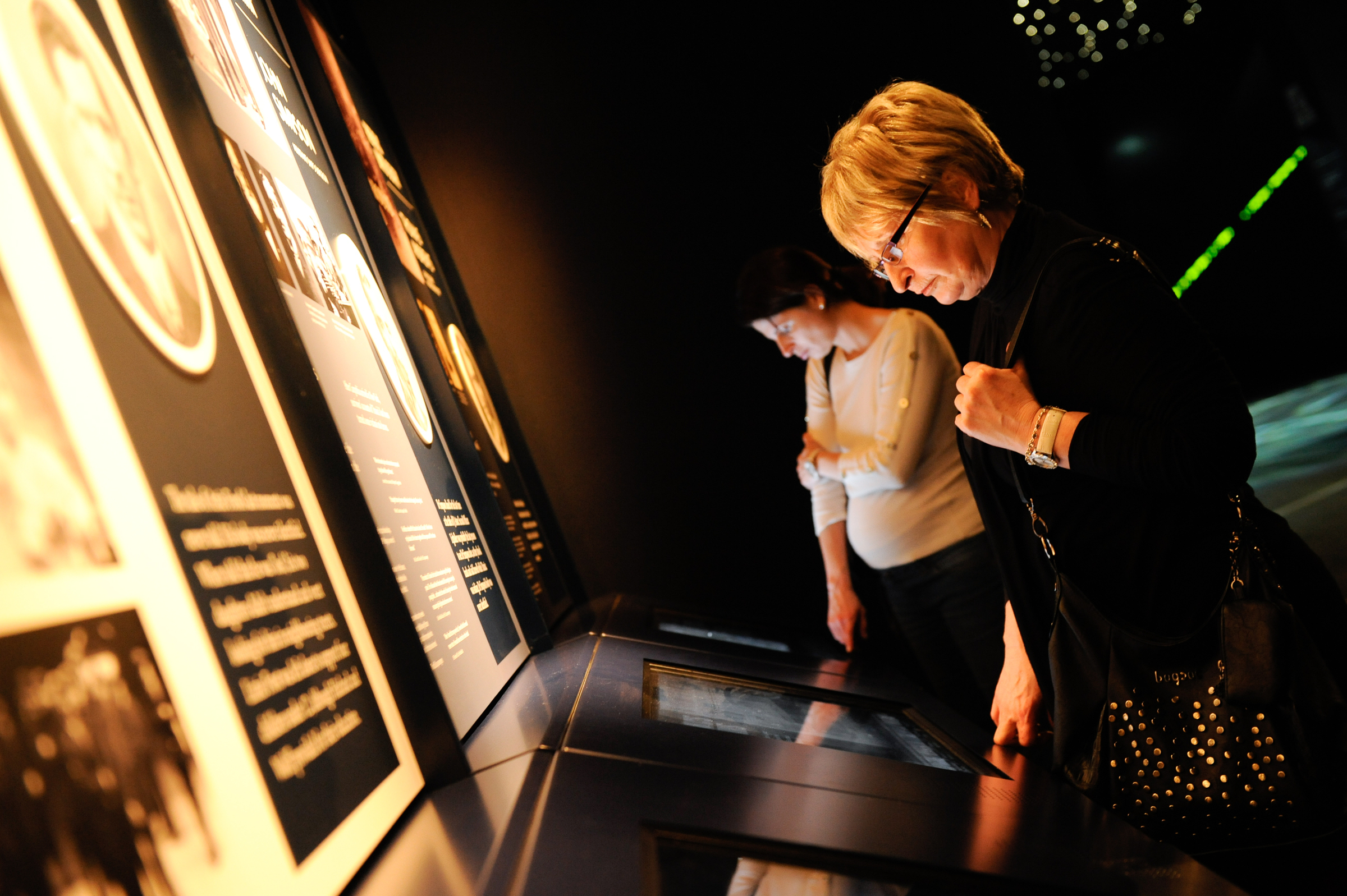In celebration of Local History Month we have been having a look at some of the key figures and locations which made Belfast, and in particular Queen’s Island, the place it is today!
With a history of shipbuilding dating back as far as the late 1700s, Queen’s Island has a rich and unique maritime heritage, preserved today by the charity Maritime Belfast Trust. Occupied for the most part by renowned shipbuilders Harland and Wolff, the island has witnessed colossal growth, survived a blitz, overcome a gradual decline in industry and is once again experiencing rapid development as part of one of the world’s largest urban-waterfront regeneration projects.
Formed from soil deposits after deep shipping channels were excavated to allow Belfast to become a major port, the island was initially named ‘Dargan’s Island’ after engineer William Dargan who was undertaking the work. It was later renamed ‘Queen’s Island’ following Queen Victoria’s visit to Belfast in 1849.
Now known as Titanic Quarter, in recognition of both the size of the area and the city’s most famous ship, RMS Titanic, the region has seen a renewed vigour with over 6.5 million tourists visiting the Titanic Experience following the success of the Titanic Signature Project. With over 18,000 people living and working there daily, the Quarter has also played host to blockbuster film and television shows with the opening of Titanic Studios in the old H&W paint halls, and is home to major leisure, entertainment and outdoor events.
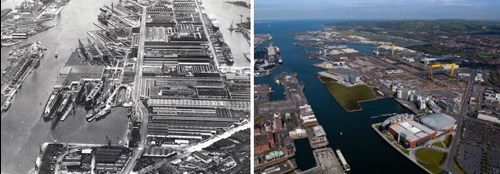
So where did shipbuilding on the island begin?
All this came from humble roots, when in 1791, William Ritchie from Ayrshire in Scotland arrived in Belfast with a crew of 10 men, some shipbuilding apparatus and materials to start a shipyard. His first ship, the 300 ton Hibernian, was launched one year later, kick-starting the shipbuilding industry on the island which would eventually lead to the rise of one of the largest shipyards in the world – Harland and Wolff.
H&W was born out of a small struggling shipyard owned by Robert Hickson, who employed Edward James Harland as a general manager. After appointing Gustav Wolff as his assistant, the two men developed a plan to rescue the ailing business, with Hickson eventually offering to sell the yard to Harland, who later made his assistant a partner in the new company, which began to trade as ‘Harland and Wolff’ in 1861. In the 30 years that followed, the growth of the company rocketed the shipyard from its original size of 1.5 acres to a new 80 acre site, while the number of employees rose from 100 to 10,000 men.
Construction began on the Harland and Wolff Headquarters and Drawing Offices in the late 1800s. In addition to administrative offices, the building featured beautiful barrel-vaulted drawing offices where RMS Titanic and 1,000 other ships were conceived and designed. Today it still stands in the same spot, now a B+ listed building, and is home to not only Titanic Quarter office space but the historic drawing offices will be restored and transformed into a boutique 4-star hotel, opening September 2017.
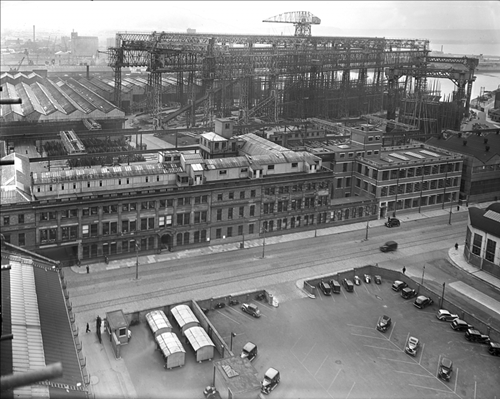
The Harland & Wolff Drawing Offices
Top: Heritage Lottery Fund | Bottom: Maritime Belfast Trust
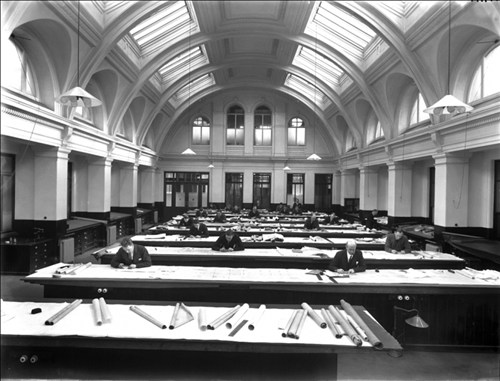
It was around this time that Edward James Harland passed away, leaving William James Pirrie as the new chairman of the company. Shortly after Thomas Andrews became Managing Director of the firm, he oversaw a number of changes to the yard to make way for the building of the company’s most famous ships – the Olympic Class Liners.
The existing slipways in the North Yard (nos. 1-4 shown on the map below) were re-engineered to create two larger slipways (nos. 2 and 3 shown in the revised plans from 1911 below) which would be big enough and strong enough to accommodate the huge, heavy hulls of Olympic and Titanic. Sir William Arrol & Co. of Glasgow was also commissioned to build the enormous Arrol Gantry over the new slipways, weighing almost 6000 tonnes once completed. This remained in use until the 1960s.
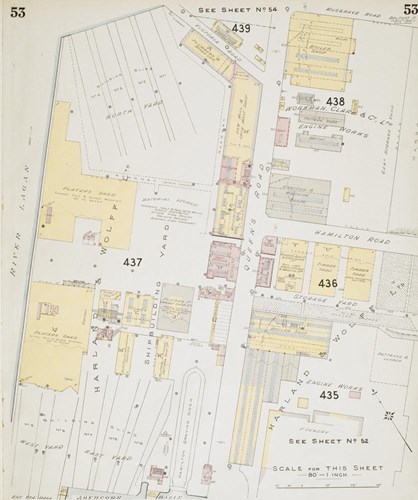
Plans of Harland & Wolff Shipyard
Above: 1898 Insurance Plan - Oldmapsonline.org
Below: 1911 Plan - NMNI.com
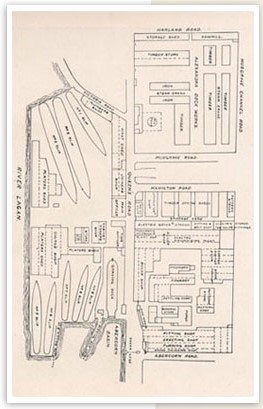
The space on which Titanic Belfast now sits was once occupied by a plater’s shed and materials store, while the site currently occupied by the Odyssey Pavilion and SSE Arena was used for coal depots during the early 1900s. The outline of the sister ships sitting on the slipways can be seen today at the back of Titanic Belfast’s iconic building, inlaid in the stone.
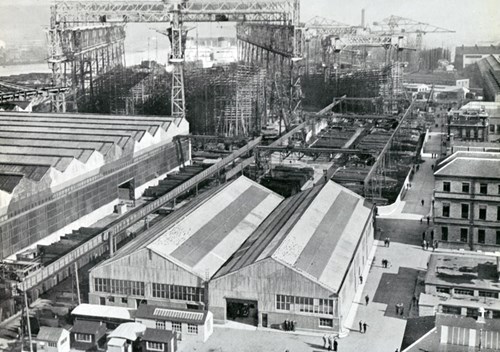
The North Yard c. 1935-1968, where Titanic Belfast sits today at the top of the slipways.
TheYard.info
Harland and Wolff are still in operation on the island today, with the skyline dominated by their famous twin gantry cranes, Samson and Goliath, built in 1974 and 1969 respectively. While a large proportion of their work is now focused on the offshore wind power industry, the company recently carried out work on restoring both SS Nomadic and HMS Caroline, both now popular visitor attractions in Titanic Quarter.
Read more about the History of the Shipyard as we look other iconic landmarks on Queen’s Island, turn your attention to the people on Queen’s Island or conclude our series with a look at the women on Queen’s Island.
Experiences at Titanic Belfast
Experience the true legend of RMS Titanic, in the city where it all began. Unmissable and unforgettable, just like Titanic herself.
